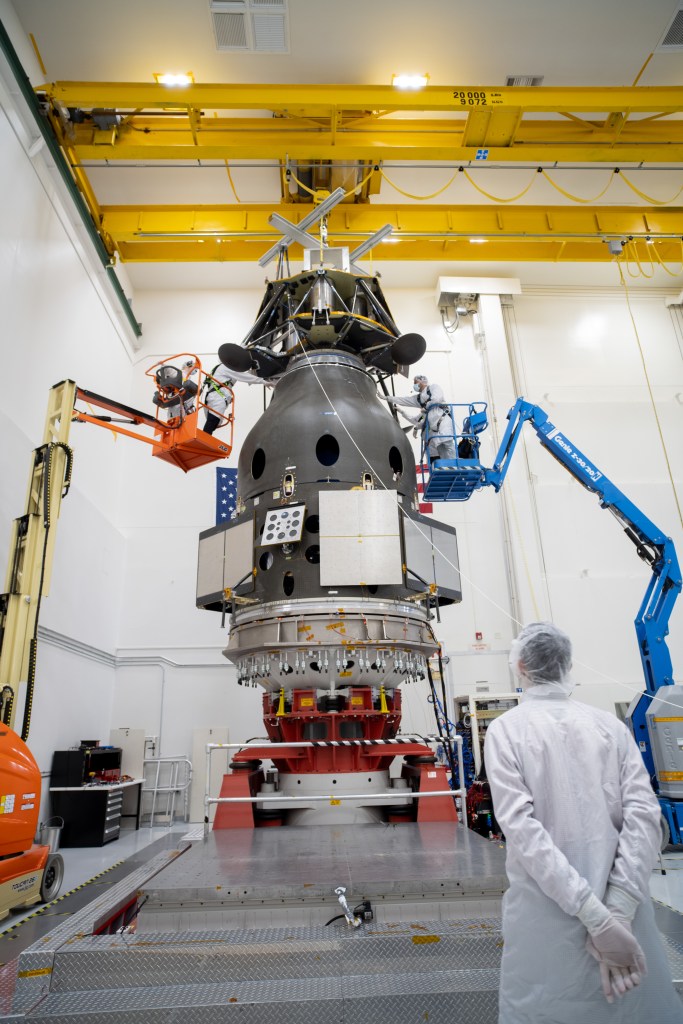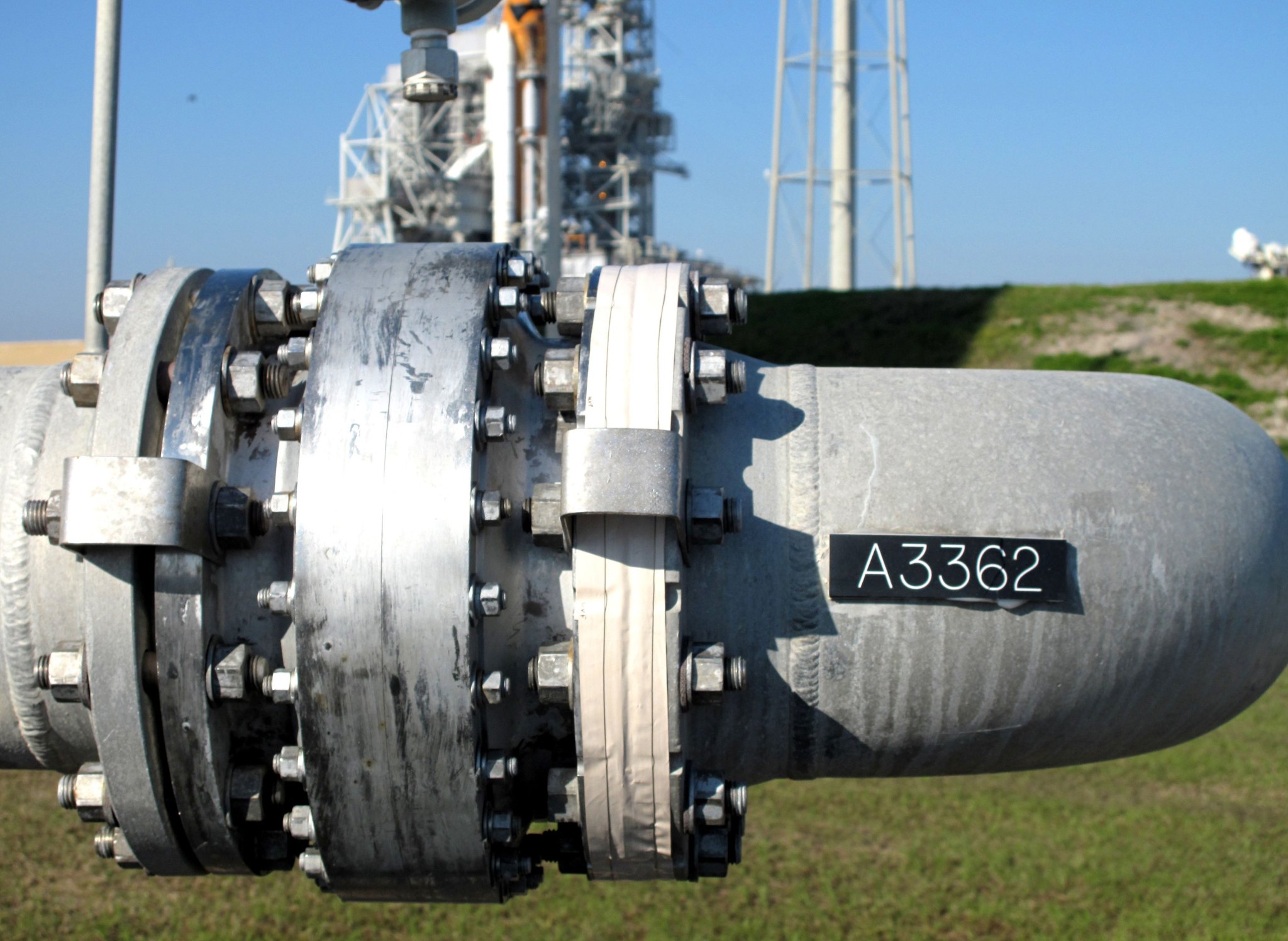A safety innovation developed jointly by the University of Central Florida (UCF) and NASA has been selected for a 2014 R&D 100 Award. The invention is a chemochromic sensor in a tape that can detect hydrogen leaks by changing color, a critical safety technology for the Space Shuttle Program. Its primary application is for use in industries such as oil and gas production.
More recently, the NASA Office of the General Counsel announced in May 2016, the Hydrogen Leak Detection Tape was recognized with the agency’s Commercial Invention of the Year Award. The annual program honors innovations that have “significantly contributed to NASA programs, or that exemplify NASA’s mission to transfer cutting edge technology to U.S. industry.”
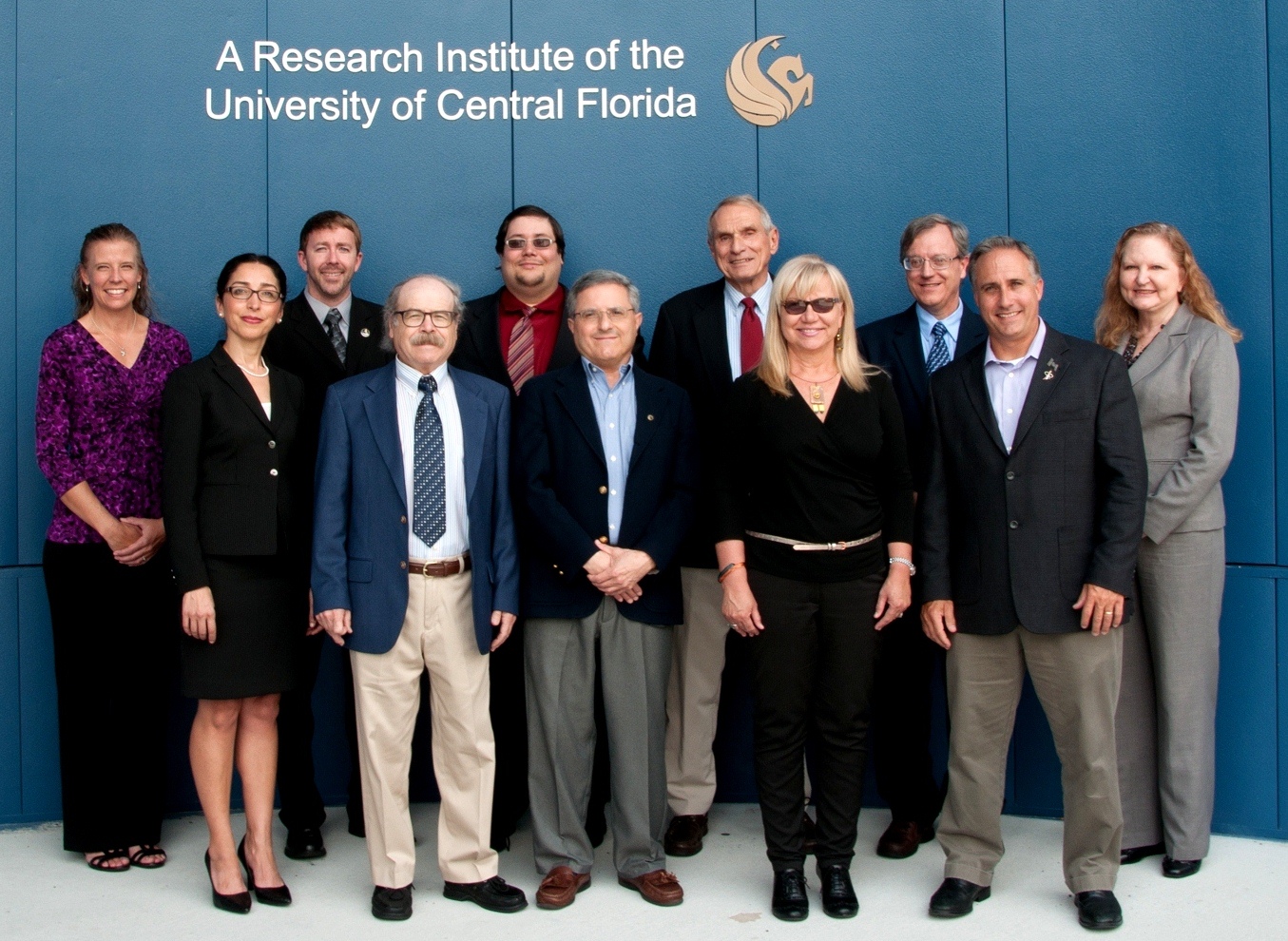
Jim Nichols, licensing manager of the NASA Research and Technology Management Office in Center Planning and Development, endorsed the nomination for the R&D 100 Awards and noted that safety was the impetus for the innovation.
“NASA was looking for a safe, easy to use, effective and non-powered way of identifying hydrogen leaks,” he said. “Working together, researchers from Kennedy and the University of Central Florida developed the tape matrix and hydrogen-sensing pigment that formed the basis of the hydrogen tape technology.”
The international R&D 100 competition recognizes the 100 most technologically significant products introduced into the marketplace over the past year. The 52nd annual presentation is scheduled for Nov. 7, 2014, in Las Vegas, Nevada.
Known as the “Oscars of Invention,” the recognition has been presented by R&D Magazine since 1963. The publication features news about advancements in research and development. Past technologies honored have included the automated teller machine in 1973, the halogen lamp in 1974, the fax machine in 1975, the liquid crystal display in 1980, the Kodak Photo CD in 1991 and high-definition television in 1998.
The NASA project that resulted in the invention of the tape that detects leaks by changing color was led by principal investigator Luke Roberson, Ph. D., a NASA research scientist, along with other inventor team members Drs. Janine Captain, Martha Williams, Trent Smith and LaNetra Tate. Other team members included Drs. Robert Youngquist, Mary Whitten, Barbara Petterson, David Smith and, from QinetiQ North America at Kennedy, Robert DeVor. The University of Central Florida inventors were led by Ali Raissi, Ph. D., director of the Advanced Energy Research at UCF’s Florida Solar Energy Center. Other UCF team members included Drs. Nazim Muradov, Nahid Mohajeri, Gary Bokerman and R. Paul Booker.
Roberson explained that, from time to time, during the Space Shuttle Program tracking down the precise location of a hydrogen leak was a difficult challenge.
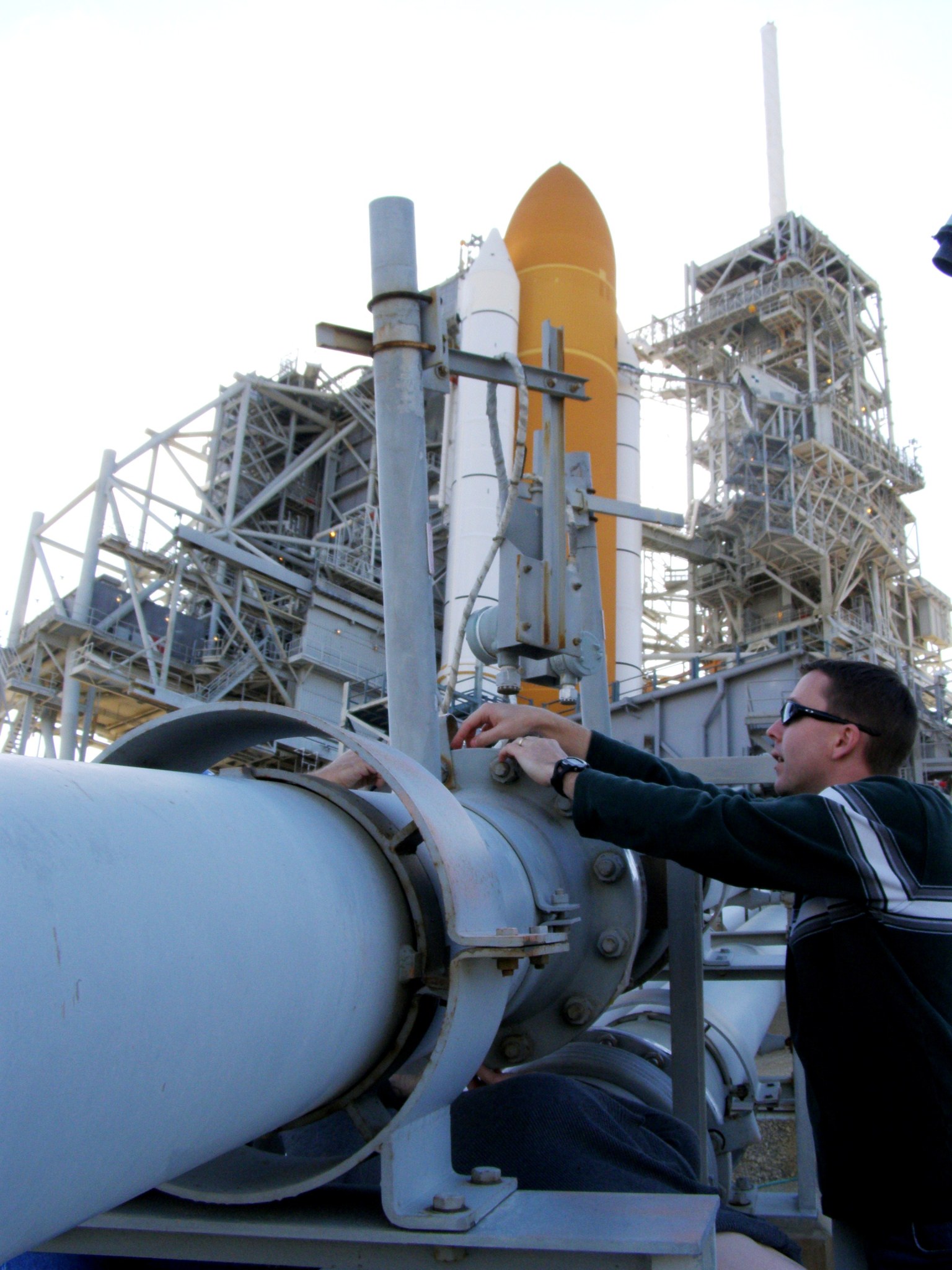
Liquid hydrogen is a lightweight and extremely powerful rocket propellant used extensively by NASA. Its characteristics also make it highly flammable and explosive, requiring close attention to avoid leaks.
“Those of us in Research and Technology were originally asked for help in finding a precise way to locate hydrogen leaks during 2004,” he said.
NASA enlisted the assistance of University of Central Florida in developing a pigment that would change color when exposed to hydrogen. Chemochromic materials respond to the exposure to different chemicals with a change in color due to a chemical reaction within the substance.
“After two years of research, the team at UCF came up with a pigment that could be added to a silicon caulk,” Roberson said.
The end result was the development of the innovative “Color Changing Materials for Hydrogen Detection.”
What followed was extensive compatibility and flammability testing of the color-changing sensor tape. The checkouts ensured it was safe to use at the launch pads and proved useful in visually notifying technicians of a hydrogen leak.
NASA is the largest consumer of liquid hydrogen in the United States. It has been used with liquid oxygen as propellant for the second and third stages of the Apollo Saturn V rocket, the space shuttle main engines and is planned for use with the Space Launch System. Beginning with the Gemini program, liquid hydrogen was combined with liquid oxygen to operate electricity-generating fuel cells.
As the lightest element, hydrogen is only seven percent as dense as water and requires large tanks compared to other fuels. Hydrogen has the lowest molecular weight of any known substance and burns with extreme intensity at 5,500 degrees Fahrenheit. It yields the highest specific impulse, or efficiency in relation to the amount of propellant consumed of any rocket propellant.
While providing a powerful rocket fuel, hydrogen has numerous challenges. Its explosive nature was never more evident than in the 1937 catastrophic fire that destroyed the Zeppelin Hindenburg.
Because liquid hydrogen is cryogenic — super cold — it must be stored at minus 423 degrees Fahrenheit and managed with extreme care. During the Space Shuttle Program, efforts began to develop a simple method of detecting hydrogen leaks at Launch Pads 39A and 39B.
One of the first applications took place as the space shuttle Endeavour was being prepared for the STS-118 mission in the summer of 2007.
“There was a hydrogen leak on the OMBUU and Launch Pad 39A,” said Roberson. “It proved to be elusive and we thought the tape could help.”
The OMBUU was the Orbiter Midbody Umbilical Unit, a horizontal access arm for servicing the mid-fuselage portion of the space shuttle at the launch pad. It was used for loading liquid hydrogen and liquid oxygen into the spacecraft’s fuel cells.
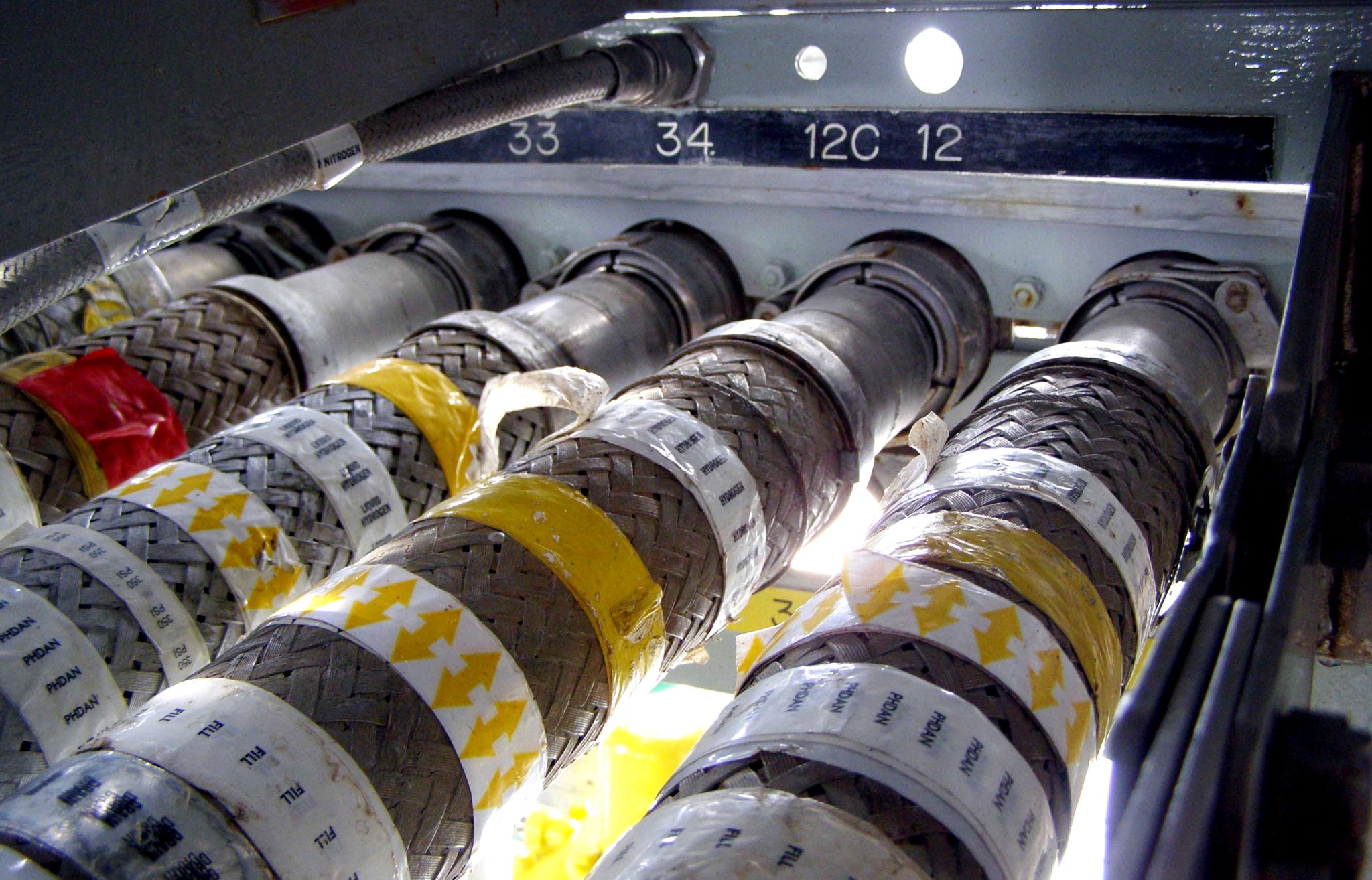
“Sensors were successful in identifying that there was a leak,” Roberson said. “The tape helped pinpoint the exact location.”
The tape works by changing color from beige to high-contrast black in less than three minutes when concentrations as low as 0.1 percent are detected. This is well before reaching the explosive combustion threshold of about four percent. The pigment is completely passive requiring no power and is highly resistive to environmental factors including ultraviolet exposure, salt spray and humidity.
The tape also was added to connectors on the cross-country lines leading from the liquid hydrogen storage tank at Launch Pad 39A during the final years of the shuttle program.
NASA’s hydrogen sensing technology patent was licensed to the University of Central Florida in January 2014. The university in turn combined it with their patents and licensed it to HySense Technology of Rockledge, Florida, to bring the product to commercial consumers as “Intellipigment.”
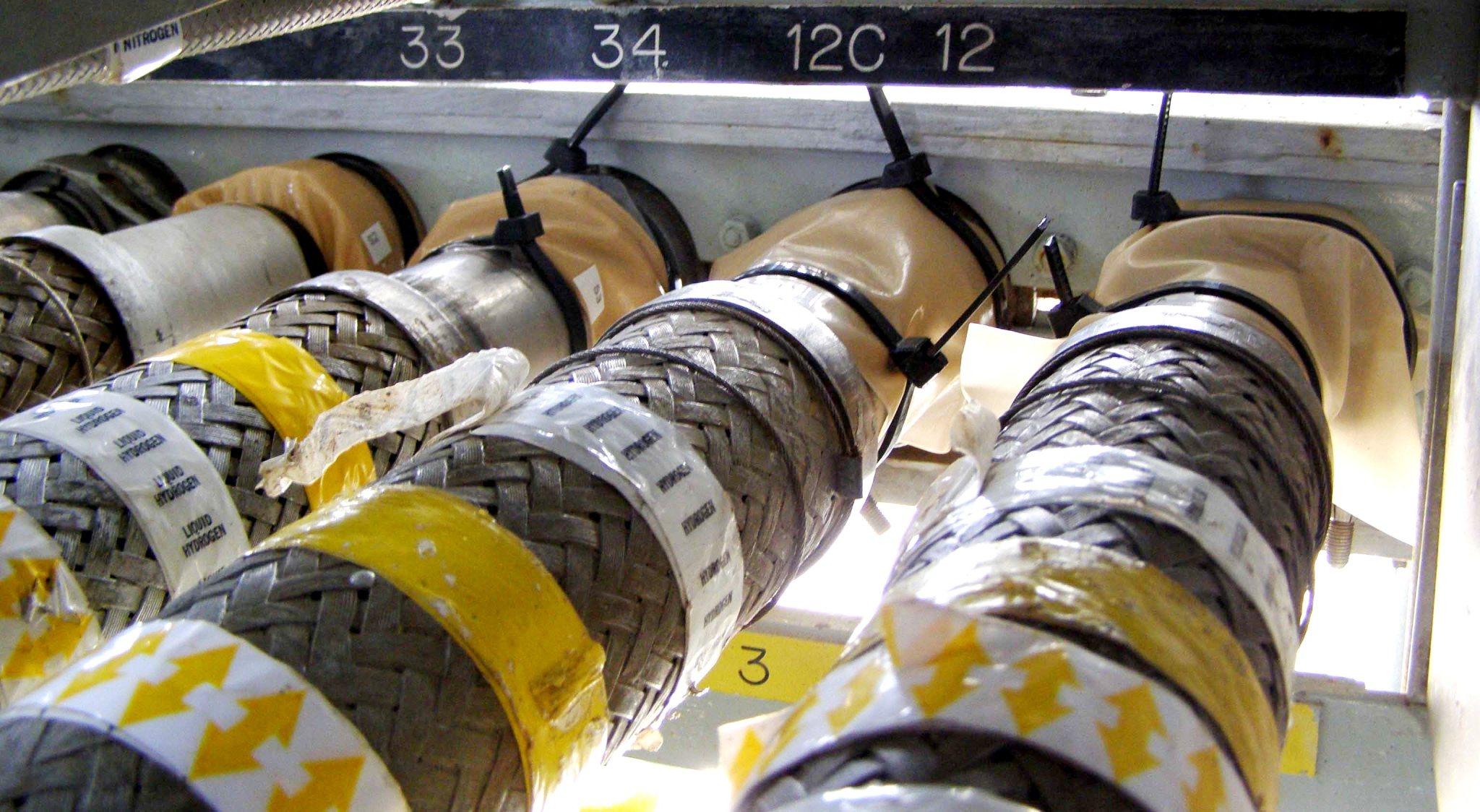
“Realizing the potential benefits and commercial market for such technology, Kennedy and UCF entered into an agreement to combine our patent portfolios and jointly license the technology,” Nichols said.
The primary application is for use in the oil and gas production, chemical production and power generation industries. Together, these lines of work produce and consume a reported 57 million tons of hydrogen gas annually.
The tape is easily applied to joints, flanges and other leak-susceptible areas of vessels transporting, storing or transferring hydrogen gas. Additionally, as the fuel cell market emerges, “Intellipigment” can provide a simple and reliable safety check for applications such as vehicles, where owners or technicians easily can identify a leak.













